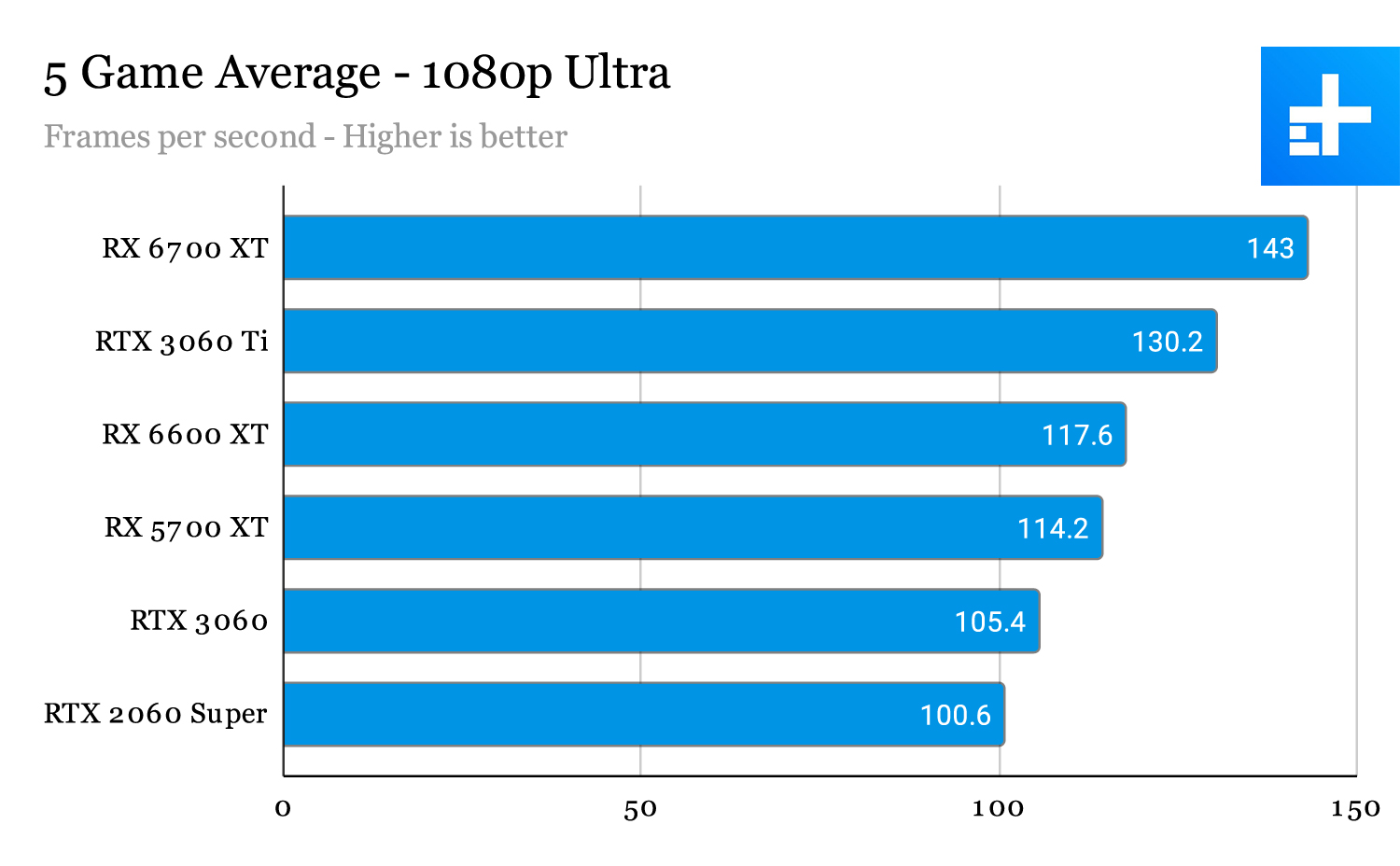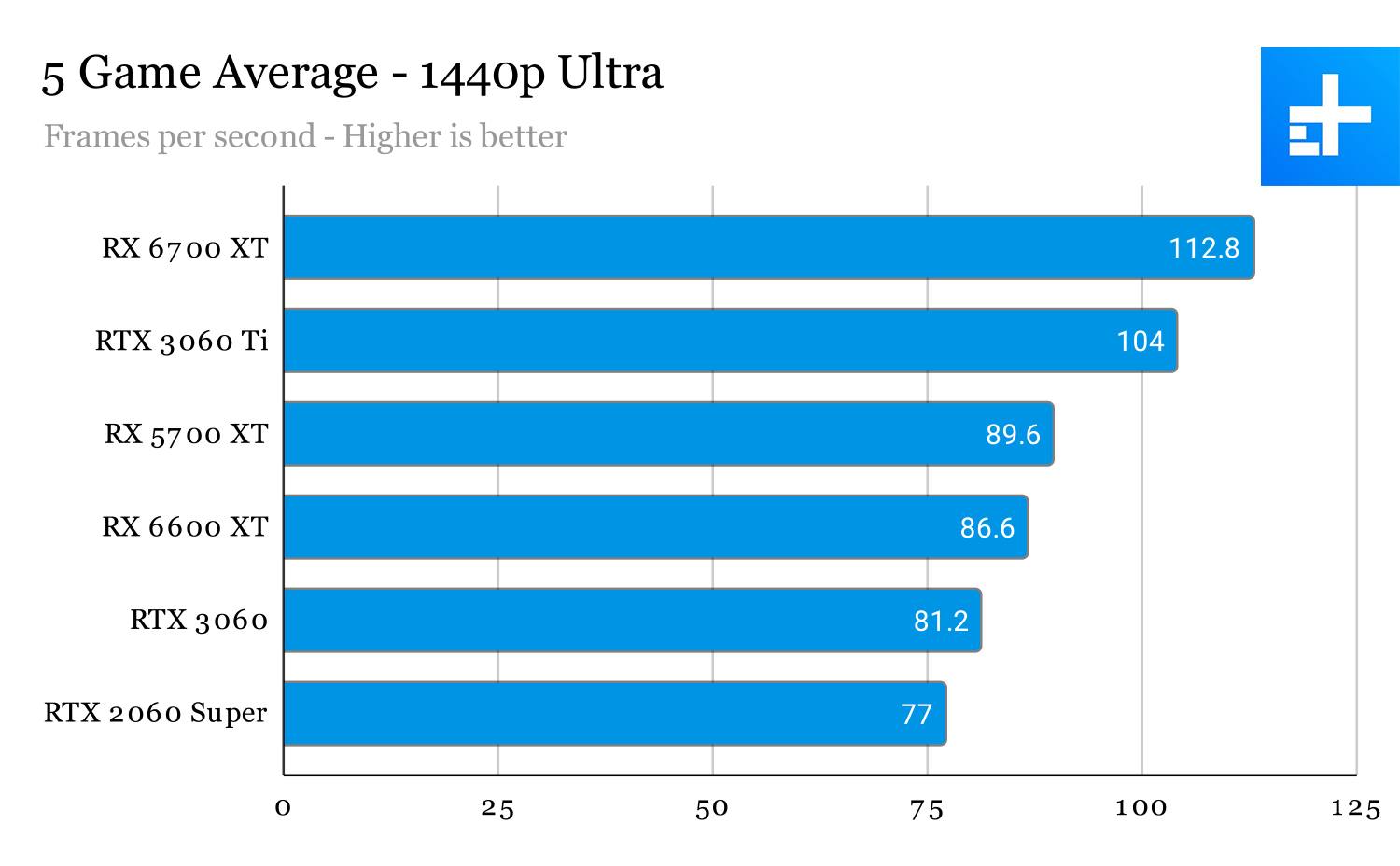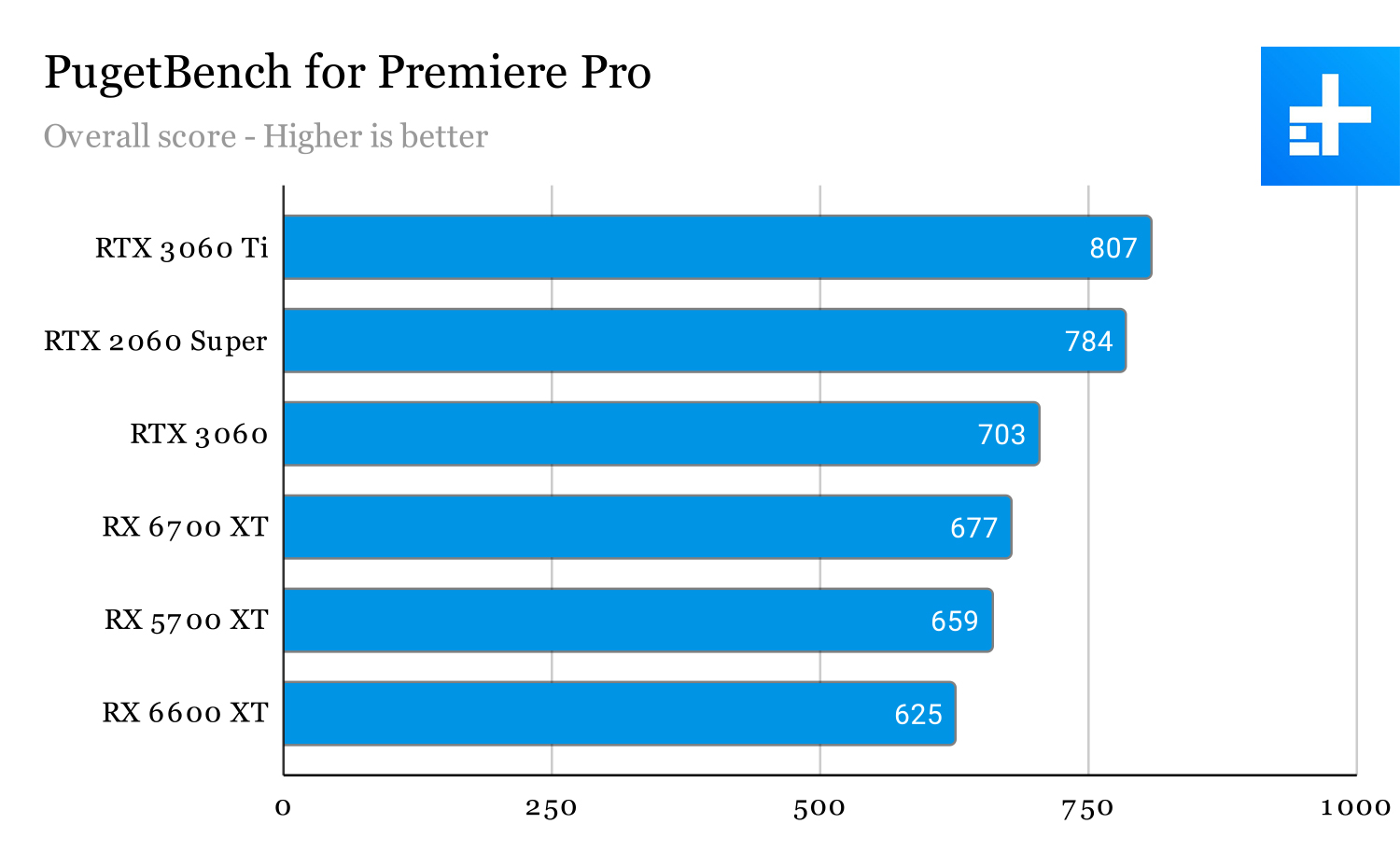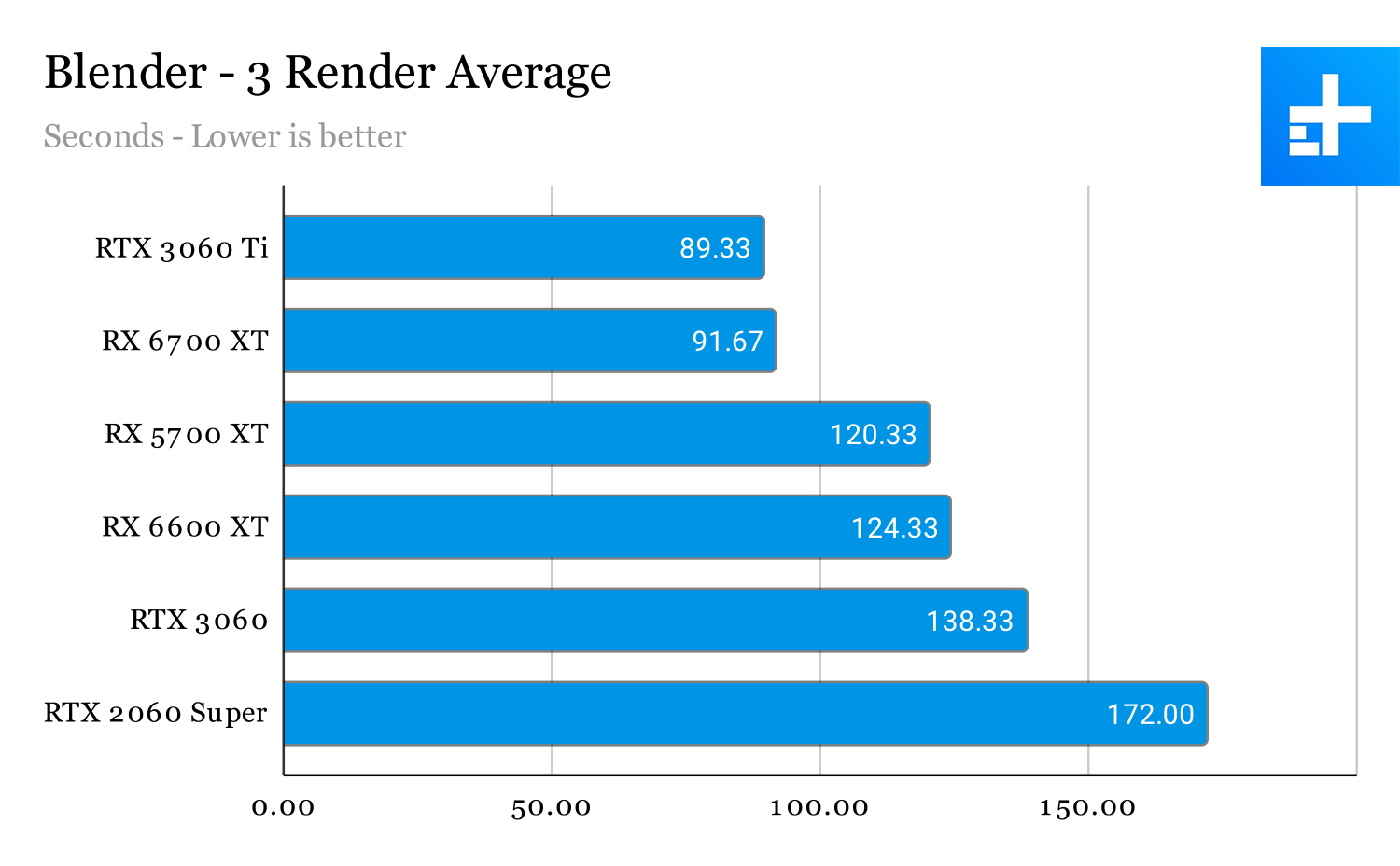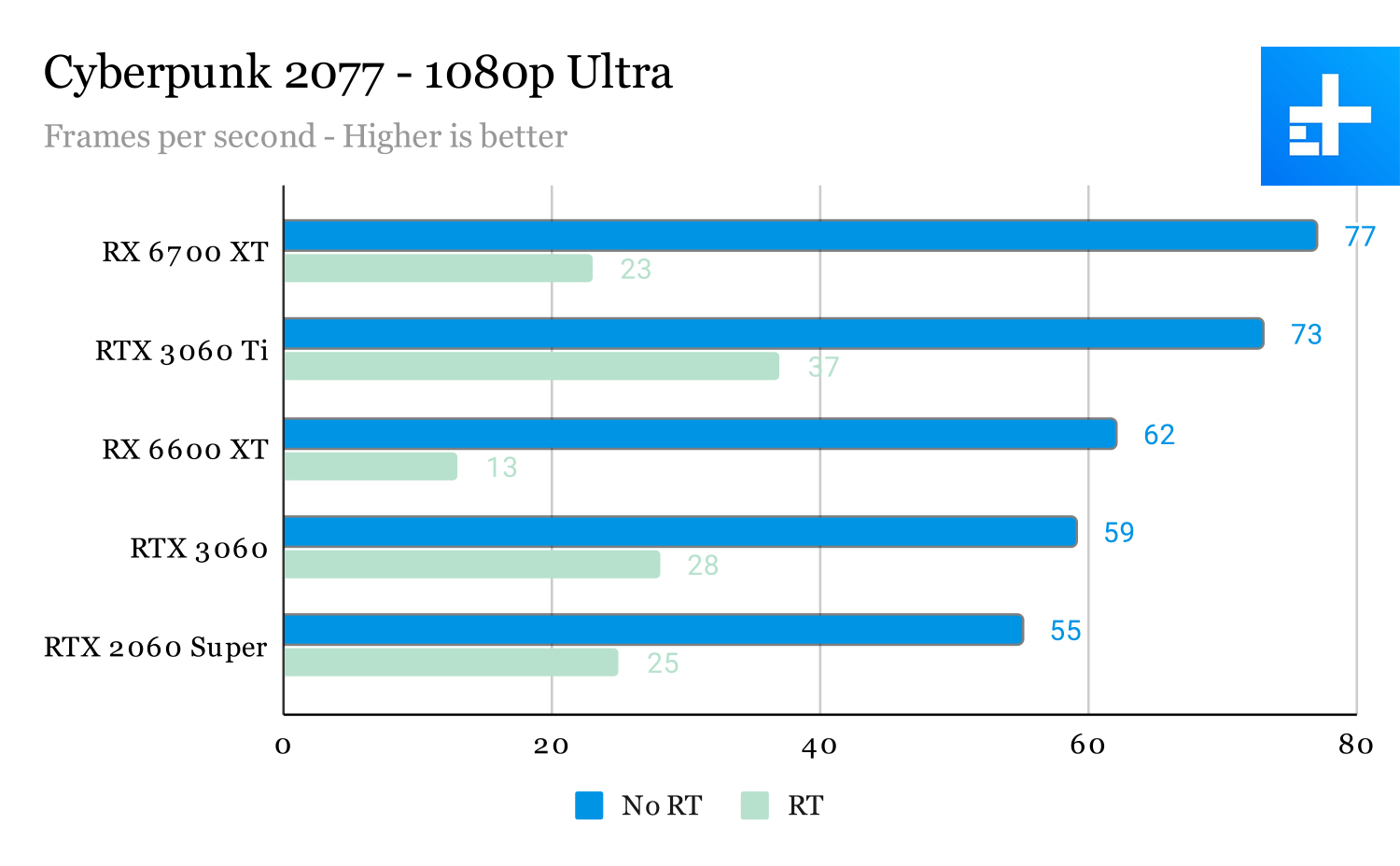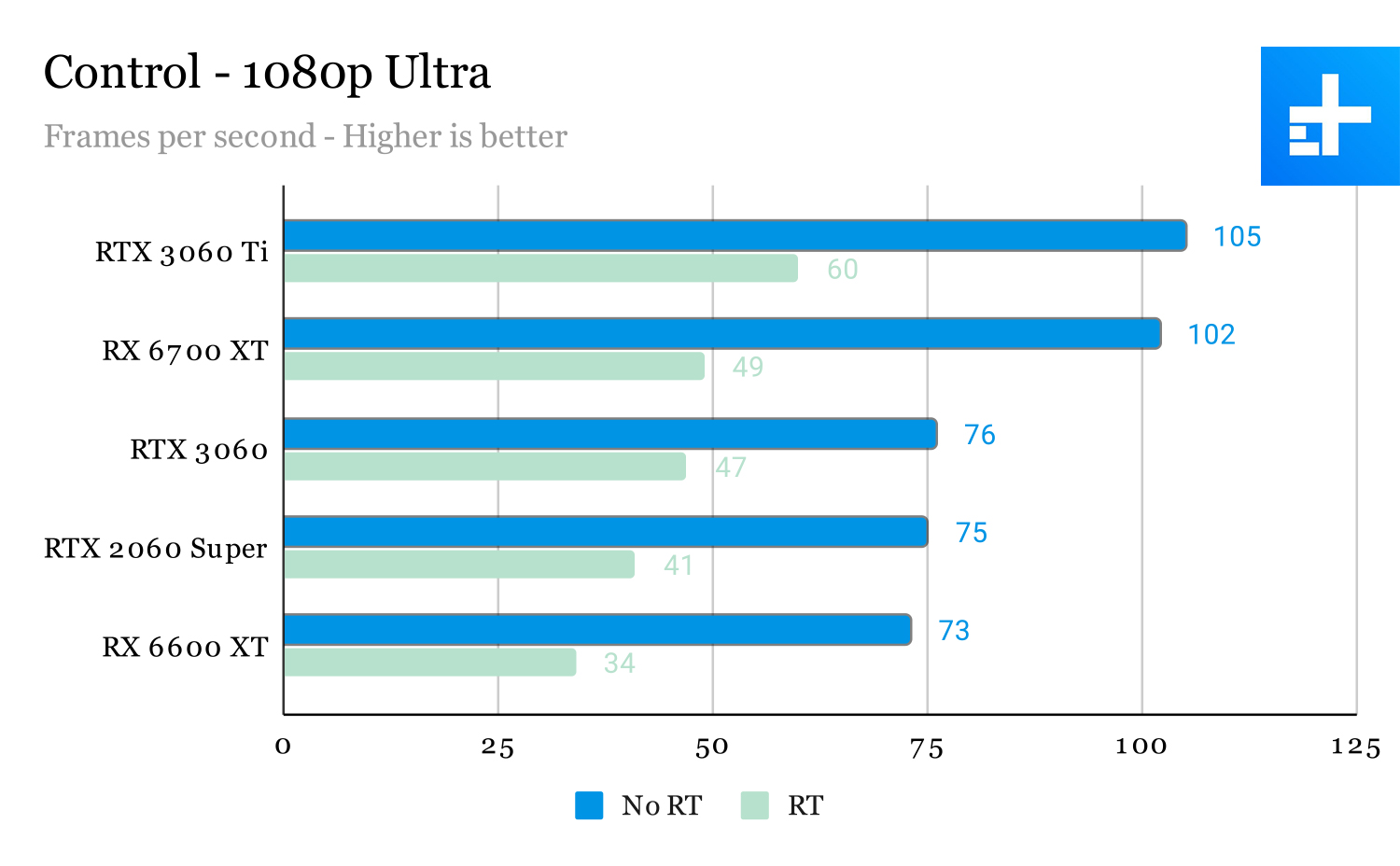- Smooth gaming at 1080p
- Doesn't require a lot of power
- Capable of 1440p gaming
- Support for FidelityFX Super Resolution
- A little too expensive
- Lackluster content creation performance
- Poor ray tracing performance
Budget and 1080p gamers haven’t had a lot of graphics card options over the past several months, and AMD’s new RX 6600 XT is looking to solve that problem. It’s a card capable of delivering smooth 1080p gaming at high refresh rates, and it uses a cut-down core to help alleviate some supply issues. But its price stretches the definition of what it means to be a budget graphics card.
Below $500, AMD could have priced the RX 6600 XT just about anywhere and still sell cards like there’s no tomorrow. At $379, it nestles into a comfortable place between the Nvidia competition, and if you can grab one at launch for list price, you won’t find another card that performs as well for the cost.
But should you? $379 is an attractive price given the current market conditions, but the RX 6600 XT still needs to stack up the competition once the launch boom is gone. The Radeon RX 6600 XT is a solid card, but it’s flanked by two excellent cards from Team Green that give it a run for its money.
Design
AMD isn’t releasing a reference design for the RX 6600 XT, so you’re limited to options from board partners. For this review, I got my hands on MSI’s RX 6600 XT Gaming X card, which uses a traditional dual-fan design.
AMD has shared designs from other partners, some of which include three fans, but most should come with two. Regardless of the model, the RX 6600 XT uses a single 8-pin power connector and requires a 500W power supply at a minimum.
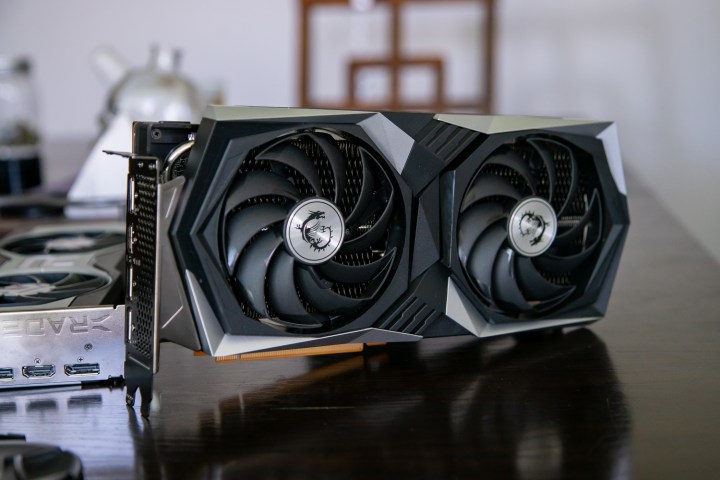
My unit measured 10.88 inches long, accounting for the slightly protruding shroud. Every model is a little different — especially the triple-fan ones — so make sure to check before picking one up. A standard dual-fan design shouldn’t be longer than the length of an ATX motherboard (12 inches).
Throughout testing, the card stayed cool, peaking at around 62 degrees Celsius in Cyberpunk 2077. It’s important to mention that I tested inside a Be quiet! Dark Base Pro 900 rev. 2, which is a full tower chassis with a little extra room for cooling. Your mileage may vary.
A welcome feature on my review unit was a backplate, which is something the competing RTX 3060 I tested lacked. At least one board partner design has a backplate based on the images AMD provided, but that may not be true for all designs.
Specs
The RX 6600 XT builds on AMD’s existing RDNA 2 architecture, which we have already seen in action time and again. However, it’s built using the Navi 23 GPU core, which is otherwise only available in AMD’s workstation-class Radeon Pro W6600 and W6600M. This is the Navi 23’s debut for the consumer desktop crowd.
An important thing to note about Navi 23 compared to previous versions: It’s much smaller. That means AMD can squeeze more GPU dies onto a wafer, which should help supply. It’s still built using chipmaker TSMC’s 7nm node, but with a smaller size, AMD is able to crank out more chips with each manufacturing pass.
| Compute Units | Shading units | Game Speed | Boost speed | Memory capacity | TDP | Price | |
| Radeon RX 6600 XT | 32 | 2,048 | 1.97GHz | 2.59GHz | 8GB GDDR6 | 160W | $380 |
| Radeon RX 6700 XT | 40 | 2,560 | 2.32GHz | 2.58GHz | 12GB GDDR6 | 230w | $480 |
| Radeon RX 6800 | 60 | 3,840 | 1.82GHz | 2.11GHz | 16GB GDDR6 | 250w | $580 |
| Radeon RX 6800 XT | 72 | 4,608 | 2.02GHz | 2.25GHz | 16GB GDDR6 | 300W | $649 |
| Radeon RX 6900 XT | 80 | 5,120 | 2.01GHz | 2.25GHz | 16GB GDDR6 | 300W | $1,000 |
Regardless, Navi 23 is built on AMD’s existing architecture, so we can draw plenty of comparisons to the rest of the range. Compared to the next step up, the RX 6600 XT sheds around 20% of the compute units (CUs) for a 20% difference in price. That would make sense with all other specs equal, but they’re not. The RX 6600 XT matches the boost clock speed of the RX 6700 XT, but it comes with 4GB less GDDR6 memory.
The RX 6600 XT shows a decent value compared to similar gaps in the range.
Still, it’s better than some other steps in the range. Moving down from an RX 6800 to an RX 6700 XT, there’s about a 20% price difference for a 40% difference in CUs — and that step also drops 4GB of RAM. At least by AMD’s own lineup, the RX 6600 XT shows a decent value compared to similar gaps in the range.
There isn’t much of a reason to draw comparisons to Nvidia on the specs front — I’ll dig into the better brand in the upcoming sections. However, it’s important to point out the price of the RX 6600 XT compared to the competition. At $380, it’s sandwiched between Nvidia’s RTX 3060 at $330 and the RTX 3060 Ti at $400.
The RTX 3060 Ti comes with 8GB of memory, too, while the RTX 3060 comes with 12GB. With prices in mind, the path forward is clear. The RX 6600 XT should perform slightly below an RTX 3060 Ti and around 20% lower than the RX 6700 XT. But does it?
Gaming
The RX 6600 XT is targeting 1080p, high refresh rate monitors. And based on my average frame rates, it hits that mark well. Across the five non-ray tracing games I tested, it averaged 117.6 frames per second (fps), making it a great option for 1080p monitors with a 144Hz refresh rate. The 1440p performance is only slightly worse with an average of 86.6 fps.
Before getting to individual results, it’s worth looking at the averages I gathered. At 1080p, the RX 6600 XT rests between the RTX 3060 Ti and RTX 3060 where it should, slightly exceeding the performance of last-gen’s RX 5700 XT. There’s about a 10% difference between the RX 6600 XT and its closest competitor in price, the RTX 3060 Ti.
1440p showed similar results, though with a larger 18% difference between the RTX 3060 Ti and RX 6600 XT. The RTX 3060 and RX 6600 XT were much closer with only a 6% difference. Of course, averages like this don’t tell the full story, so let’s walk through some individual tests for a clearer picture.
I tested the RX 6600 XT with a machine rocking an Intel Core i9-10900K, 32GB of RAM, and an Asus Tuf Z490-Plus motherboard. All of my tests were run off a Crucial MX500 2TB hard drive with the latest version of Windows 10. Unfortunately, I didn’t have an AMD processor to test Smart Access Memory, but you can expect a boost of 5-10% in supported games if you have a recent Ryzen processor.
Starting with the most straightforward fight, the RX 6600 XT took home a GPU score of 9,644 in 3DMark Time Spy. That’s about 11% faster than RX 5700 XT and RTX 3060, which scored within a point of each other in this test. As you’ll see in other tests, the RX 6600 XT gets close to the RX 5700 XT in most games. Here, it actually shoots ahead.
The RTX 3060 Ti puts the RX 6600 XT back in its place, however. It earned a graphics score of 11,706 — about a 19% difference. That’s true of the RX 6700 XT, too, which took the crown in 3DMark with a graphics score of 12,068.

Assassin’s Creed Valhalla is one of the games that favored the RX 6600 XT over the RTX 3060 Ti . At 1080p with Ultra High settings, the RX 6600 XT earned an average of 83 fps. That’s within one frame of the RX 5700 XT, but still five frames ahead of the RTX 3060 Ti. The RTX 3060 and RTX 2060 Super trailed the pack at 64 fps and 66 fps, respectively, while the RX 6700 XT once again came out on top at 100 fps.
At 1440p Ultra High, the RX 6600 XT and RTX 3060 Ti traded places. The AMD card came in at 60 fps while the Nvidia one came in at 64 fps. The RTX 3060 was markedly lower at 51 fps, while the RX 6700 XT still showed its dominance at 76 fps. At High settings, I found similar results, with the RX 6600 XT outpacing the RTX 3060 Ti at 1080p but falling short at 1440p.
The Vulkan-based Red Dead Redemption 2 painted a slightly different picture, with the RX 6600 XT performing closer to the RTX 3060. The RX 6600 XT averaged 68 fps at 1080p Ultra Quality, while the RTX 3060 averaged 65 fps. The RTX 3060 Ti showed a 21% difference compared to the RX 6600 XT, averaging 84 fps.
I saw similar performance at 1440p Ultra Quality, with the RTX 3060 Ti leading the pack at 70 fps. The RX 6600 XT showed a 24% difference compared to the RTX 3060 Ti with an average frame rate of 55 fps. Like at 1080p, the RTX 3060 only slightly trailed the RX 6600 XT with a 4% difference between them.
AMD made good on its promise to deliver 1080p gaming with high frame rates.
Civilization VI once again showed a commanding lead for the RTX 3060 Ti, though the RX 6600 XT got closer than it did in Red Dead Redemption 2. The RX 6600 XT averaged 161 fps at 1080p Ultra settings, while the RTX 3060 Ti averaged 194 fps, which is about a 19% difference. The RX 6700 XT shot ahead of the other cards with a 219 fps average.
I saw similar scaling at 1440p Ultra. The RX 6600 XT earned 137 fps and the RTX 3060 Ti earned 163 fps, while the RTX 3060 trailed at 119 fps. Here, the RX 6600 XT fits into the spot it should — right in between the RTX 3060 Ti and RTX 3060.
Battlefield V produced similar results. The RX 6600 XT averaged 139 fps at 1080p Ultra settings. The RTX 3060 showed a 12% difference at 123 fps, and the RTX 3060 Ti showed a 9% difference at 152 fps. The RX 6700 XT once again came out on top at 164 fps.
At 1440p Ultra settings, the RTX 3060 Ti pushed even further ahead of the RX 6600 XT. AMD’s card averaged 100 fps and Nvidia’s averaged 123 fps — almost a 21% difference. The RTX 3060 was close to the RX 6600 XT at 97 fps, while last-gen’s RX 5700 XT scored a slightly higher 110 fps.
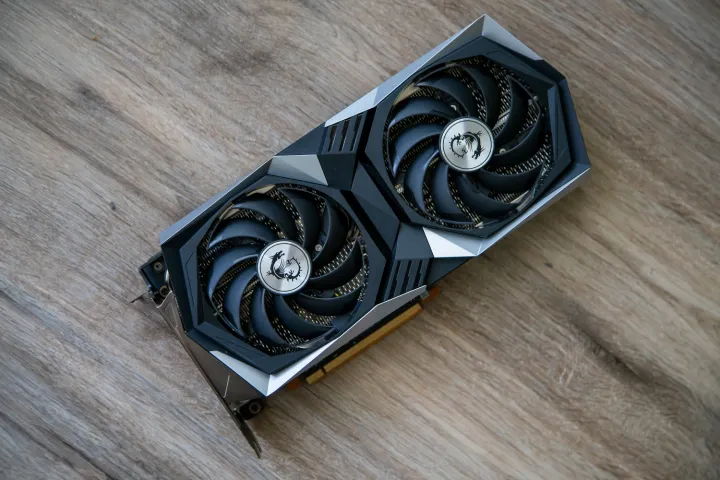
Fortnite showed a tighter race between the RX 6600 XT, RTX 3060, and RTX 3060 Ti. The RTX 3060 Ti lead at 1080p Epic settings at 143 fps, but the RX 6600 XT wasn’t far behind at 137 fps (only a 4% difference). The RTX 3060 trailed the group at 132 fps. All three cards scored far above the RTX 2060 Super and RX 5700 XT — both of which never broke 110 fps — showing some clear improvements from the previous generation.
The 1440p Epic showed a more commanding lead for the RTX 3060 Ti, where it averaged 100 fps. That’s about 21% off the RX 6600 XT, which averaged 81 fps. The RTX 3060 is a better point of comparison to the RX 6600 XT at 1440p with its 86 fps average.
Overall, you can expect about a 10% difference in performance between the RX 6600 XT and the RTX 3060 cards, stacking in the way their prices would suggest. At 1080p, you’re trading about a 5% difference in price for a 10% difference in performance between the RTX 3060 Ti and RX 6600 XT. Bringing in the RTX 3060, it’s a 14% difference in price for about an 11% difference in performance.
Within AMD’s own range, the RX 6600 XT performs as it should given the specs. Even with the memory gap between the two cards, the RX 6700 XT and RX 6600 XT show about a 20% difference.
When I bring in the previous generation, however, the RX 6600 XT shows some problems. The RX 6600 XT only slightly outclassed the RX 5700 XT in my tests, which released two years ago for $399. The RX 6600 XT is only $20 cheaper and only slightly more powerful. It includes ray tracing, which the RX 5700 XT lacked, but this isn’t exactly the generational improvement I would have liked to see.
Still, AMD made good on its promise to deliver 1080p gaming with high frame rates, even if there are some slightly better options from Nvidia at list prices.
Content creation
Gaming is the focus on the RX 6600 XT, so it’s not surprising that the card takes a backseat when it comes to content creation. Here, I ran tests using Blender’s benchmark and PugetBench for Premiere Pro. The RX 6600 XT is capable of running both programs, but there might be a better option if you’re focused on them more than gaming.
In Blender, I ran three test renders and averaged the times. The RTX 3060 Ti unsurprisingly leads with support for CUDA and OptiX rendering in Blender. The RX 6600 XT still managed to beat out the RTX 3060, however, with about an 11% difference between them. Still, the RTX 3060 Ti and RX 6700 XT showed a clear lead.
PugetBench for Premiere Pro favored the Nvidia cards even more. The RX 6600 XT scored last with an overall score of 625, while the RTX 3060 Ti scored 807. Keep in mind that PugetBench takes into account a bunch of functions in Premiere Pro, so the final score isn’t solely on the shoulders of the graphics card.
I was surprised to see the RX 6600 XT show up a bit in my Blender test, but overall, it’s not a great card for content creation. It’s powerful enough to function in apps like Blender and Premiere Pro, but if you use these applications a lot, Nvidia still holds the lead.
Super Resolution and ray tracing
Normally, Nvidia would have a clear lead over AMD with Deep Learning Super Sampling (DLSS) and ray tracing. That’s not the case for this generation. The RX 6600 XT also comes with hardware-accelerated ray tracing, and it has access to a DLSS-like feature in the form of FidelityFX Super Resolution (FSR).
I took to Control and Cyberpunk 2077 to test ray tracing. I ignored DLSS for all of the tests to see how the RX 6600 XT would hold up in a fair battle. True to other cards in the RX 6000 range, it fell clearly short of the Nvidia competition.
In Cyberpunk 2077, the RX 6600 XT showed about a 79% drop when moving from the Ultra preset to the Ultra RT preset, while the RTX 3060 only showed a 53% drop. Keep in mind this is with DLSS off. Even without an upscaling advantage, Nvidia’s RTX 30-series cards handle ray tracing better than the RX 6000-series.
1440p Ultra RT was unplayable across all the cards I tested. For reference, the RX 6600 XT averaged only 3 fps in this mode. The top-performing card, the RTX 3060 Ti, averaged only 23 fps.
Ray tracing is demanding regardless of the hardware you use it on, but Nvidia’s cards can still handle the heat better than AMD’s.
Control was much more forgiving. It’s at least playable with ray tracing turned on at 1080p, but the RX 6600 XT still showed a 54% drop, and the RTX 3060 showed only a 38% drop.
At 1440p, the RX 6600 XT dropped by 62% with ray tracing turned on — 47 fps to 18 fps — while the RTX 3060 dropped by 40%. I used the RTX 3060 as a point of comparison because it was the closest competitor in these tests, but the RTX 3060 Ti showed similar drops when turning on ray tracing.
The difference here makes sense. Nvidia uses dedicated ray-tracing cores, while AMD opts for a “ray accelerator” packed into each compute unit. Ray tracing is demanding regardless of the hardware you use it on, but Nvidia’s cards can still handle the heat better than AMD’s — and the RX 6600 XT doesn’t change that.

In the case of an Nvidia card, I’d point to DLSS as a way to boost ray tracing performance. AMD has an alternative in the form of FSR, but Nvidia usually bundles ray tracing with DLSS, while FSR is a little all over the place. That could change down the line, but Nvidia’s cards still have the best set of features for ray tracing.
As my tests show, you really need an upscaling feature to run ray tracing at playable frame rates. AMD has that feature now in the form of FSR, but many popular ray tracing titles — Cyberpunk 2077 and Control included — don’t support the feature yet.
Still, FSR is available to you with the RX 6600 XT. As we found in our FidelityFX Super Resolution review, it’s a very capable upscaling feature that can seriously improve your frame rates. The image quality isn’t quite as good as DLSS, but the differences are easy to forgive once everything is up and running.
Our take
In a perfect world with list prices and GPUs on store shelves, I’d certainly recommend the RTX 3060 Ti over the RX 6600 XT. It’s only $20 more expensive and almost universally performs better. The RX 6600 XT is slightly overpriced at $380 — given its performance, it should clock in closer to $350. However, an extra $30 is hard to argue with given how expensive graphics cards are right now.
A lot of this is going to come down to what card you can find, and for what price. At launch for list price, the RX 6600 XT is a slam dunk given the going rate of graphics cards. Once the initial stock is gone, you should slot the RX 6600 XT in between the RTX 3060 Ti and RTX 3060 in terms of performance and take the asking price from there.
Is there a better alternative?
Yes, the RTX 3060 Ti is a better alternative. However, given the prices of graphics cards and the difficulty in finding them, the list price doesn’t mean much. If the RX 6600 XT price ends up between the RTX 3060 and RTX 3060 Ti, it’s a great 1080p card for high refresh rate monitors.
The other alternative is the RX 6700 XT, which outclasses even the RTX 3060 Ti, though at a premium.
How long will it last?
The RX 6600 XT should last for the next several years for 1080p gaming. If you want to use features like ray tracing or upgrade to a higher resolution, you will probably feel the weaknesses of the RX 6600 XT within a few years.
Should you buy it?
Yes. The RX 6600 XT is about $30 too expensive, but it’s still much cheaper than any other card you can buy right now. If you miss the launch boom, however, consider upgrading to the RTX 3060 Ti instead if you can find it for a decent price.



